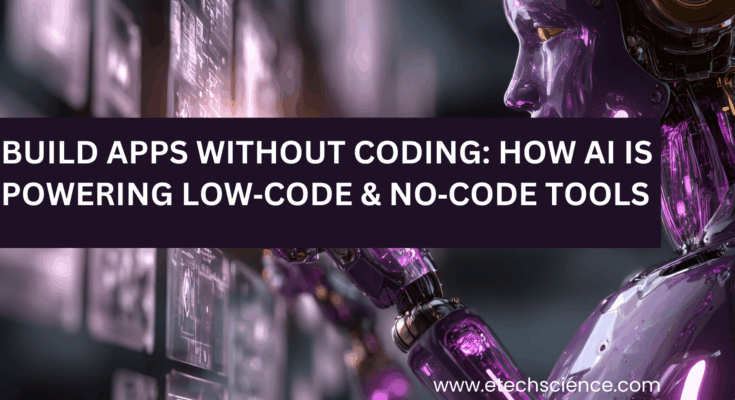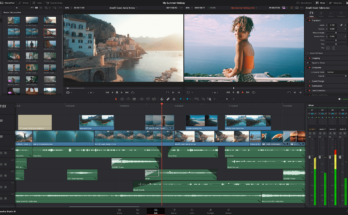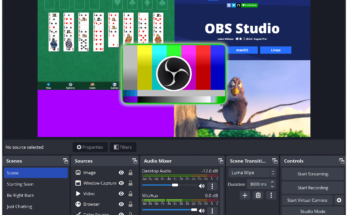Even experienced programmers can now create apps in 2025. AI-powered low-code and no-code platforms enable both developers and non-technical users to build useful applications. They use simple language and visual tools. This change helps teams of all sizes turn ideas into reality faster than ever. It reduces development time and facilitates innovation.
Low-Code and No-Code Platforms: What Are They?
Platforms that support low-code and no-code let people create apps with little or no hand-written code.
-Although it is highly abstracted, low-code still contains some coding.
No-code, which is meant for non-developers, is entirely visual or language-based.
These platforms offer pre-built modules, drag-and-drop interfaces, and shortcuts to speed up the app development process.
AI’s Place in Contemporary App Development
The driving force behind this change is AI: Platforms now produce functional code by interpreting visual flows or plain language prompts.
AI builders are used by tools like Microsoft Power Platform to automate data and predict workflows.
You can add features like voice controls, image recognition, and natural language processing to no-code platforms. This does not need a lot of technical knowledge.
Advantages of AI-Powered No-Code Systems
Faster Time to Market: Concepts swiftly develop into functional prototypes.
Accessibility for Non-Coders: Participants can be creators without extensive programming knowledge.
Cost-effectiveness: Without employing entire development teams, smaller teams can create apps.
Emphasis on Logic and Design: Pay more attention to UX, value, and strategy, and use less boilerplate code.
Common AI-Powered Low-Code/No-Code Instruments by 2025
The Microsoft ecosystem seamlessly integrates with the enterprise-friendly Microsoft Power Apps + AI Builder.
Adalo is a no-code mobile and web app builder used by entrepreneurs.
Non-developers can create machine learning-capable apps with Google AppSheet.
DataRobot and H2O Driverless AI are AI model platforms. They need little coding and are used by many companies for predictions.
Industry-Wide Use Cases
Healthcare: Non-programmers create apps for patient intake and use AI modules to automate data entry.
Education: Teachers without extensive technical knowledge design interactive learning resources and dashboards.
Startups and MVPs: Before scaling, founders quickly prototype product ideas using low-code tools to confirm market fit.
Restrictions and Things That Still Require Human Input
Security & Scalability: Some platforms struggle with complex architectures or high‑performing systems.
Customization Limits: No‑code solutions may hit a ceiling when functions need highly‑tailored logic.
Human Oversight Required: Developers are still essential for architecture decisions, performance optimizations, and ensuring long‑term maintainability.
Final Thoughts: Should You Switch to AI No‑Code Platforms?
If you want to create prototypes quickly, consider using AI-powered low- or no-code tools. These tools are useful for involving non-technical people. They also help you test product ideas fast. If you are planning a complex application for a business, you will need experienced developers. This is especially true if your app requires strong security, integrations, or high performance. Use the tools wisely—and always combine them with strategic human insight.
FAQ Section
Q1: What is app development using natural language?
A1: It’s the process of making applications using visual flows or simple English instructions. AI turns prompts into working code. Which AI tools help create code from prompts?
A2: Adalo, Google AppSheet, Microsoft Power Apps, and platforms like H2O Driverless AI are examples of tools.
Q3: Is this a way for a non-programmer to create apps?
Yes, this is true for simpler apps. They benefit from drag-and-drop interfaces and AI support. Understanding logic is also helpful.
Q4: To what extent are no-code AI platforms secure?
Security varies—some platforms lack complete customization or run the risk of becoming dependent on vendor modules.
Q5: Will conventional software developers be replaced by this?
Not likely anytime soon. Instead of replacing in-depth knowledge, AI no-code tools increase developer productivity.
Do you want to attempt creating your first non-code app? Explore these tools and let us know your experience in the comments!
Other useful stuff:
https://hackernoon.com/low-code-platforms-dont-work-well-with-ai-but-heres-how-we-can-fix-that?
https://www.ft.com/content/f4f3def2-2858-4239-a5ef-a92645577145
https://estha.ai/blog/low-code-vs-no-code-ai-comprehensive-platform-comparison-guide



